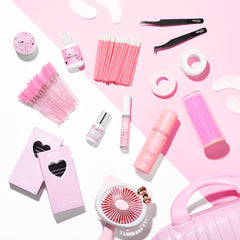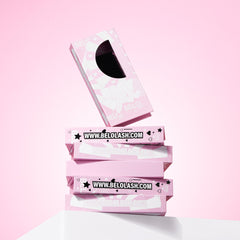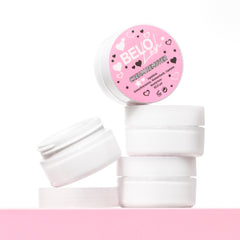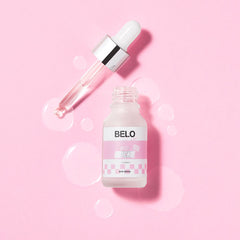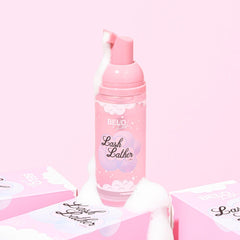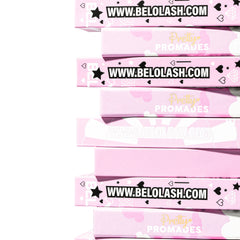In the beauty world today, long and luscious eyelashes are a coveted asset. With the power to open up the features and brighten any look, many individuals are opting for eyelash extensions in their regimes today, undergoing a simple treatment to achieve the full, fabulous lashes they have always dreamed of!
But with so many options available, it can be easy to get apprehensive about the quality of your natural lashes following a beauty treatment, especially if you are new to the lash game. Lash techs and their clients alike need to know how extensions can impact lash growth so they can take the best possible care of the natural eyelashes.
In this blog, we will look deeper into the topic, shedding some light on the effects of lash extensions and how they can impact the lash growth cycle.
The lash growth cycle
Before we discuss the impact of eyelash extensions, let's take a closer look at the growth cycle of our natural lashes. Well, this will typically consist of three distinct phases: the anagen (growth phase), the catagen (transition phase) and the telogen (resting phase).
1. Anagen phase
This is the active growth phase, where each of your individual lashes starts to grow. It is important to note that this is the most fragile time for natural lashes, and the duration of this period will vary from person to person.
2. Catagen phase
This is a transitional period, whereby your lashes will have reached their optimal length and stop growing. During this time, your hair follicle will also begin to shrink as your body prepares to naturally shed the lashes. This phase typically lasts about ten days.
3. Telogen phase
Known as the resting phase, this is a time when your eyelashes are no longer growing, remaining in the same place until natural lash shedding occurs. This phase tends to last around three to four months.
Can lash extensions influence the lash growth cycle?
Now that we know more about each phase of lash growth, it is time to explore how, and why, applying lash extensions can sometimes impact the eyelash growth cycle.
When applied correctly, eyelash extensions will not damage the natural lashes or influence their growth cycle. This is because the extensions are attached to individual eyelashes rather than the follicles themselves, which gives natural lashes the freedom to grow and shed as they would naturally.
However, improper application or low-quality extensions can disrupt the lash growth cycle and lead to damage.
How to prioritise the lash health of your clientele
Before you begin lashing with a client, it is important to follow proper care and maintenance procedures that will secure the health and safety of their natural eyelashes. Here are some handy tips and tricks our BELO Lash team has picked up during our long time in the lash industry.
1. Be mindful of the growth cycle
This is crucial! Before treating your clients, you should have an awareness of how to identify what phase lashes are in their growth cycle. This means you can avoid applying extensions to lashes that are not at optimal stages of the cycle.
As a lash tech, we would advise that you avoid applying false eyelashes during the anagen phase of lash growth. Sometimes referred to as the 'baby phase', this is a time when natural lashes will be at their weakest, meaning that choosing to lash at this stage could put unnecessary strain on their natural lashes. As a result, this can cause breakage or premature shedding.
Try to apply extensions to lashes in the catagen phase where they will be strong but are not yet ready to fall out.
2. Always opt for high-quality products
A lash artist is only as good as their products, and choosing high-quality materials for each of your clients should always be non-negotiable. Choosing premium lashes means they will have been formulated from soft, lightweight fibres that mimic natural lashes. However, cheaper alternatives can use harsh or heavy materials that will weigh down the natural lashes, potentially leading to lash damage or breakage.
It’s also important to choose top quality adhesives as these are what form the bond between the natural lash and the extension.
3. Follow proper treatment procedures
Following proper pre and post-treatment procedures can enhance the lifespan of your client’s extensions while simultaneously keeping their natural ones healthy and protected.
Use a gentle lash cleanser before the application process begins. This will guarantee that you can start lashing with a blank canvas, helping to eliminate makeup residue, oils, and debris which promotes lash health and will prevent the buildup of bacteria.
Extension aftercare is also a vital part of this process, and it is crucial that it is not overlooked. Whether your client is fussy about aftercare or not, take some time to gently remind them of the benefits this will have on the health of their lashes.
4. Avoid mascara or oil-based products
Using mascara or using oil-based products alongside lash extensions can compromise their bond and lead to premature shedding. For this reason, it is best to avoid these products to maintain the longevity of the lash extensions and avoid putting too much strain on the natural lashes.
Conclusion
Lash extensions can totally transform any client's lash game, but it is important to be aware of the ways in which they can impact the lash growth cycle. By respecting the natural growth cycle, maintaining proper care, and opting for high-quality products with your clients, you can minimise the risk to their natural lashes. Remember, by following appropriate practices and implementing care routines, individuals can enjoy the benefits of lash extensions while maintaining the integrity of their natural lashes! Got questions? Get in touch with the BELO girls today!


